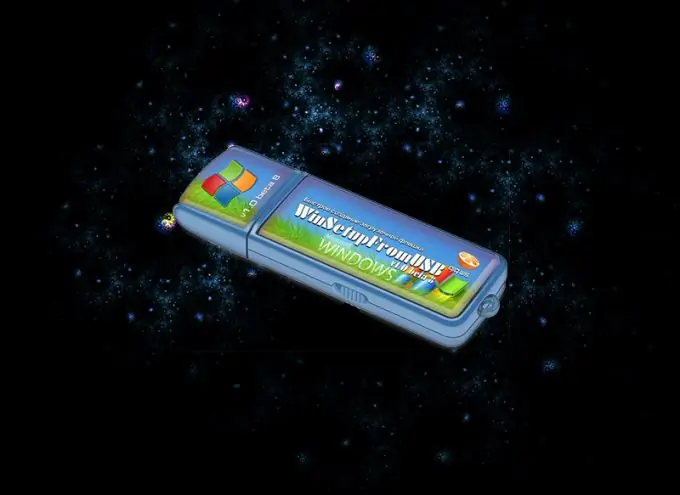The BIOS of any modern computer supports booting from a USB drive. This makes it possible to install or reinstall the OS using a bootable USB flash drive. It takes up little space, is not afraid of scratches and dust and can always be at hand. In addition, many netbooks, laptops and even desktop computers do not have a working drive. In this case, installing the operating system from a USB flash drive may be the only option available.

Preparation for work
To create a bootable USB drive, you must have:
The original bootable disk image in ISO format. In order to avoid problems with the installation, the image must be original, you do not need to use various assemblies of "folk craftsmen".
Flash drive with a volume of 4-8 GB, depending on the OS version for which the bootable USB flash drive is created. The drive will be formatted, so it should not contain important data.
One of the applications for creating a bootable USB drive. Various programs can be used: Windows 7 USB DVD Download Tool, UltraISO, Rufus, a set of utilities WinSetupFromUSB and others.
A computer running any version of windows. If the computer is running windows xp, then to create a bootable USB flash drive with windows 7, the system must have NET Frameworrk 2.0 and Microsoft image Mastering API V2 installed. You can download the packages from the Microsoft website.
The work begins with formatting the flash drive. No special utilities are required for this. It is enough to open the explorer and find your USB flash drive in the list of disks, in the context menu of which it is opened by a right click of the mouse - you need to select the "Format" item. For the regular BIOS version, it is recommended to select "format to NTFS". If UEFI is used instead of BIOS, then FAT 32 format must be used
Windows 7 USB DVD Download Tool
The utility was created by Microsoft and is available for download from the official website. How to work with the application:
You need to specify the path to the distribution image, select from the proposed USB Device options, specify the path to the USB flash drive and click "Begin copyng". The program will transfer the distribution to the flash drive, and the bootable USB flash drive will be created.
Rufus
The latest version of the application can be downloaded from the official website of the program. Rufus does not require installation and is easy to use.
After starting the application in its main window, in the very first item of the "Device" menu, you must specify the letter assigned to the flash drive.
In the column "Partition scheme and type of system interface" select either the first item "MBR for computers with BIOS or UEFI" (for PCs with a regular BIOS) or the third "GPT for computers with UEFI interface".
For BIOS, the NTFS file system is recommended. It is best to leave the cluster size at the default. Next, you need to select the image of the system distribution kit and click on the DVD-ROM icon. After that, in the window that opens, specify the path to it and click on the "Open" button. In a few minutes, the bootable USB stick will be ready.
Using the UltraISO program
The application must be run with administrator rights. Load the OS image into the program using the "File" - "Open" menu items. In the "Boot" menu and select "Burn hard disk image".
In the next window, you must specify: Disk drive - flash drive, recording method "USB HDD +". The rest of the parameters do not need to be changed. UltraISO is faster than many others. The distribution image will be ready in 20 minutes.
A set of utilities WinSetupFromUS
Designed for advanced users. Allows you to create multiboot flash drives for various operating systems, which can be run both from the DOS environment and from an external drive. The built-in BootIce application allows you to partition your flash drive and create different types of boot loaders.






